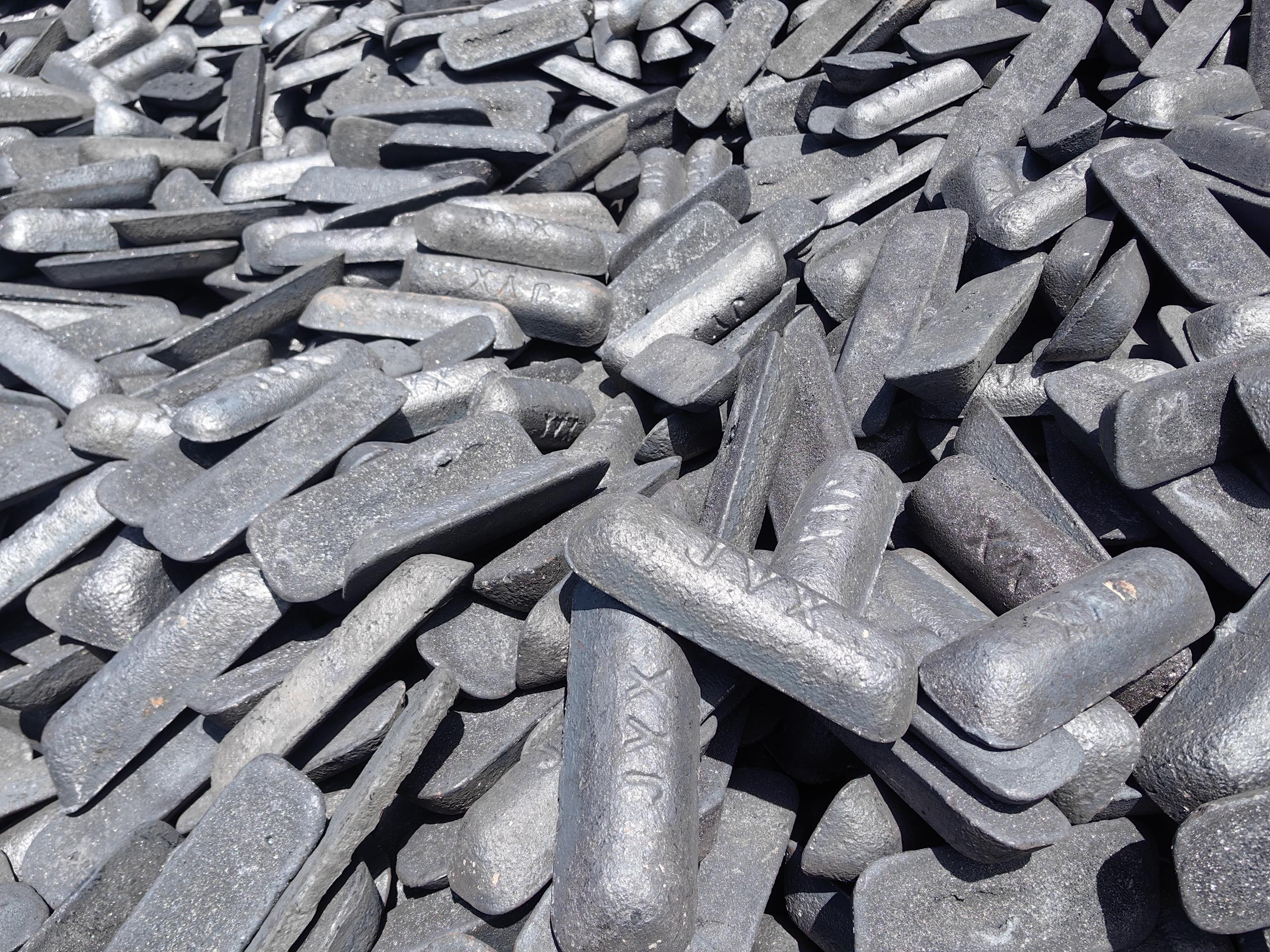What Is Manganese Content in Pig Iron?——A Complete Guide
2025-07-29 16:11:52 hits:0
Table of Contents
I. Manganese in Pig Iron and Its Importance
II. Basic Understanding of Manganese in Pig Iron
III. The Role of Manganese in Pig Iron
IV. Characteristics of Manganese Content in Different Types of Pig Iron
V. Relationship Between Manganese and Other Elements in Pig Iron
VI. Differences in Manganese Content Between Pig Iron and Other Materials
VII. Impact of Manganese Content on the Use of Pig Iron
VIII. Control and Adjustment of Manganese Content in Pig Iron
IX. Key Summary of Manganese Content in Pig Iron

I. Manganese in Pig Iron and Its Importance
As a fundamental material in industrial production, pig iron occupies a core position in fields such as machinery manufacturing and construction. Manganese, as a key element in pig iron, its content directly affects the smelting process, performance, and application scenarios of pig iron. This article will focus on the core issues related to manganese content in pig iron, helping readers gain a comprehensive understanding of this important element.
II. Basic Understanding of Manganese in Pig Iron
1. Forms of Manganese in Pig Iron
Manganese in pig iron mainly exists in the form of manganese carbides (such as Mn3C), and some of it dissolves in the iron matrix. These manganese elements are mainly introduced through raw materials like iron ore and coke, and enter pig iron through reduction reactions during high-temperature smelting.
2. General Range of Manganese Content in Pig Iron
Under normal circumstances, the manganese content in pig iron fluctuates between 0.2% and 2.0%. This range is affected by multiple factors: in terms of raw materials, the manganese content in iron ore directly determines the total amount of manganese introduced into pig iron; in terms of smelting processes, the blast furnace temperature and the amount of reducing agent will affect the reduction rate of manganese, thereby changing the final manganese content.
III. The Role of Manganese in Pig Iron
1. Impact on the Pig Iron Smelting Process
Manganese plays multiple roles in smelting: as a deoxidizer, it can combine with oxygen in the molten iron to form MnO, reducing the oxygen content and reducing oxide inclusions; as a desulfurizer, it combines with sulfur to form high-melting-point MnS, which can reduce the harm of sulfur to pig iron and improve the quality of pig iron; at the same time, an appropriate amount of manganese can improve the fluidity of molten iron, facilitate the separation of slag and iron, and enhance smelting efficiency.
2. Impact on the Properties of Pig Iron
In terms of mechanical properties, an appropriate amount of manganese can improve the hardness and strength of pig iron by strengthening the matrix, but an excessive amount will lead to a decrease in toughness and an increase in brittleness of pig iron. In addition, manganese can enhance the wear resistance of pig iron, making it suitable for manufacturing wear-resistant parts, but its impact on corrosion resistance is relatively limited.
IV. Characteristics of Manganese Content in Different Types of Pig Iron
Different types of pig iron have significant differences in manganese content due to their different uses:
The manganese content of steel-making pig iron is usually 0.3% - 1.5%, which can provide deoxidizers and alloying elements for subsequent steel-making and improve the processing performance of steel.
The manganese content of foundry pig iron is mostly 0.5% - 1.0%, which can meet the needs of casting processes, ensure the fluidity and formability of molten iron, and reduce casting defects.
The manganese content of ductile iron is controlled at 0.3% - 0.8% to avoid excessive manganese from destroying the spherical shape of graphite and balance the strength and toughness of the material.
The manganese content of high-purity iron is extremely low (≤0.01%), which is to ensure its high purity and maintain excellent magnetic properties, plasticity, and toughness.
V. Relationship Between Manganese and Other Elements in Pig Iron
1. Interaction Between Manganese and Carbon
Manganese is a strong carbide-forming element and will combine with carbon to form stable carbides. When the manganese content increases, more carbon will exist in the form of carbides, increasing the hardness and strength of pig iron, but the toughness will decrease accordingly; if the manganese content is low, carbon is more likely to exist in the form of graphite, and the brittleness of pig iron is relatively small.
2. Interaction Between Manganese and Silicon
Silicon has the effect of promoting graphitization, while manganese hinders graphitization, and there is a competitive relationship between the two in this process. A high silicon content can offset the hindrance of manganese to graphitization to a certain extent and improve the toughness of pig iron; however, when the manganese content is too high, even with the effect of silicon, it may still lead to an increase in the brittleness of pig iron.
3. Relationship Between Manganese and Impurity Elements Such as Phosphorus and Sulfur
For sulfur, manganese has a stronger affinity and will preferentially combine with it to form high-melting-point MnS, which is discharged in the form of slag, thereby reducing the sulfur content in pig iron and alleviating the hot brittleness phenomenon. For phosphorus, although manganese cannot completely eliminate its harm, an appropriate amount of manganese can improve the strength of pig iron, make up for the toughness decrease caused by phosphorus to a certain extent, and reduce the impact of cold brittleness.
VI. Differences in Manganese Content Between Pig Iron and Other Materials
1. Comparison of Manganese Content Between Pig Iron and Steel
The manganese content of pig iron is generally 0.2% - 2.0%, while the manganese content range of steel is wider: ordinary steel is 0.3% - 0.8%, low-alloy steel is 1.5% - 2.5%, and high-alloy steel exceeds 10%. This difference stems from the different uses and performance requirements of the two - pig iron focuses on basic applications, while steel needs to achieve diversified performance through precise control of manganese content. Correspondingly, pig iron has moderate hardness and strength but low toughness, while steel can obtain various performance combinations by adjusting the manganese content.
2. Comparison of Manganese Content Between Pig Iron and Cast Iron
The manganese content of pig iron is close to that of gray cast iron (gray cast iron is 0.5% - 1.4%), the manganese content of ductile iron is lower (0.3% - 0.8%), and that of malleable cast iron is 0.3% - 1.2%. This difference directly affects its application scenarios: gray cast iron is suitable for machine tool beds and engine blocks due to its good casting performance and shock absorption; ductile iron has excellent mechanical properties and is mostly used for parts such as automobile rear axle housings; malleable cast iron has good toughness and is often used for pipe fittings and valves.
VII. Impact of Manganese Content on the Use of Pig Iron
1. Application Scenarios of Pig Iron with Different Manganese Contents
Pig iron with high manganese content (1.0% - 2.0%) is suitable for manufacturing wear-resistant parts such as crusher jaws and grinding balls that need to withstand severe friction and impact due to its high hardness and wear resistance; pig iron with low manganese content (0.2% - 0.5%) has good toughness and is suitable for manufacturing products with high toughness requirements such as agricultural machinery parts.
2. Relationship Between Specific Pig Iron Products and Manganese Content
Taking the crusher jaw as an example, its manganese content is usually 1.5% - 2.0%, and its high wear resistance can meet the needs of ore collision and friction, extending its service life; machine tool guide rails are made of pig iron with a manganese content of 0.8% - 1.2% to balance hardness, wear resistance, and shock absorption, adapting to the long-term use needs of machine tools.
VIII. Control and Adjustment of Manganese Content in Pig Iron
1. Control of Manganese Content During Production
Controlling manganese content needs to start from two aspects: raw materials and processes. In terms of raw materials, detect the manganese content of iron ore, coke, etc., and calculate the proportion according to the target value to control the total amount of manganese introduced; in terms of processes, achieve precise control by regulating the blast furnace temperature (high temperature promotes manganese reduction, low temperature inhibits it) and the amount of reducing agent (increasing the amount can improve the manganese reduction rate).
2. Adjustment Measures When Manganese Content is Abnormal
If the manganese content is too high, the amount of low-manganese iron ore can be increased, the blast furnace temperature can be appropriately reduced, or oxidants can be added to oxidize part of the manganese into slag; if the manganese content is too low, the proportion of high-manganese iron ore can be increased, the blast furnace temperature can be raised, or ferromanganese alloy can be added to directly supplement manganese elements.
IX. Key Summary of Manganese Content in Pig Iron
Manganese content has a decisive impact on the smelting process (deoxidation, desulfurization efficiency and smelting quality), performance (mechanical properties, wear resistance) and application scenarios of pig iron. In the future, with the upgrading of industrial demand, more precise intelligent control technology will become a trend, realizing real-time monitoring and adjustment of manganese content, and providing support for the production of high-quality customized pig iron.
If you want to master the comprehensive knowledge of carbon, silicon, manganese, phosphorus, and sulfur at once, the summary blog "Comprehensive Analysis of Pig Iron Parameters" will be a good choice.
We have conducted special analyses for each element in pig iron. For more details, you can click directly to view: [Carbon in Pig Iron], [Silicon in Pig Iron], [Manganese in Pig Iron], [Phosphorus in Pig Iron], [Sulfur in Pig Iron].
If you have any thoughts, please feel free to contact us for communication.
You can also share this article with more friends who are interested in the chemical composition of pig iron.
About Tiegu Company
As a professional pig iron supplier, Tiegu Company covers various types such as steel-making pig iron, foundry pig iron, ductile iron, and high-purity iron, which can meet the diversified needs for manganese content in different scenarios. Through strict detection of raw material manganese content, real-time monitoring and precise adjustment during production, the company ensures stable product quality and provides customers with reliable pig iron supply solutions.
Contact Us
WhatsApp: 15256135588 (First 10 inquiries receive extra gifts)
E-mail:zbw@tiegu.net
Apply for Pilot: Click the link to get a customized solution (First batch of customers enjoy 20% discount)
Blog Author Profile
DAWN | Pig Iron & Castings Procurement Advisor 18 years in the foundry trenches give me an edge: I know how pig iron’s chemistry impacts casting quality and can troubleshoot defects like cracks and porosity. With a 1M MT/year pig iron and 60k MT/year casting output from our in-house factory, plus 200+ verified suppliers on our platform, we offer fast price comparisons. Expect a 24-hour inquiry response—my goal? Not just closing deals, but being your go-to partner in the foundry world.
18 years in the foundry trenches give me an edge: I know how pig iron’s chemistry impacts casting quality and can troubleshoot defects like cracks and porosity. With a 1M MT/year pig iron and 60k MT/year casting output from our in-house factory, plus 200+ verified suppliers on our platform, we offer fast price comparisons. Expect a 24-hour inquiry response—my goal? Not just closing deals, but being your go-to partner in the foundry world.


 en
en  fra
fra  de
de  ru
ru  ara
ara  gle
gle  it
it  jp
jp  kor
kor  th
th  zh
zh 


